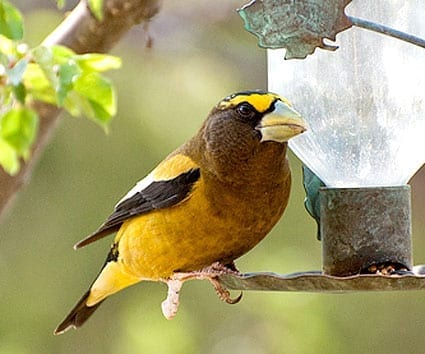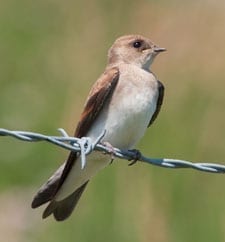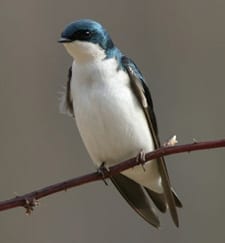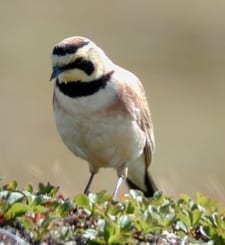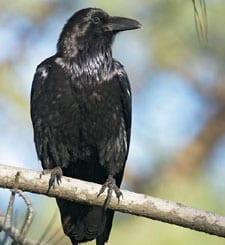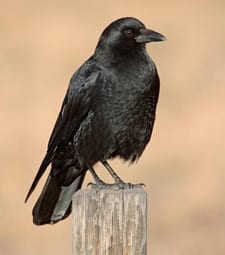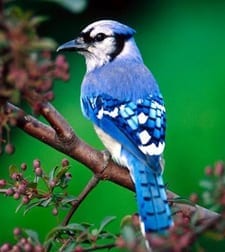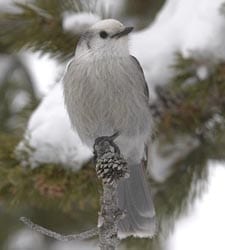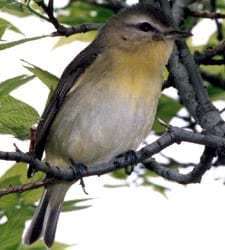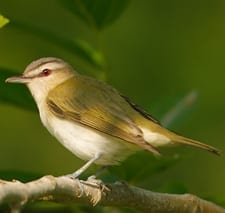Evening Grosbeak
A heavyset finch of northern coniferous forests, the Evening Grosbeak adds a splash of color to winter bird feeders every few years, when large flocks depart their northern breeding grounds en masse to seek food to the south. The yellow-bodied, dusky-headed male has an imposing air thanks to his massive bill and fierce eyebrow stripe. [...]

